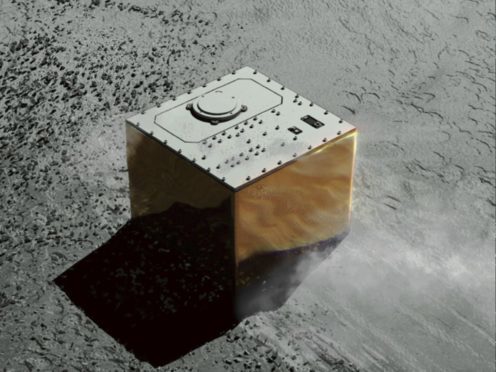A scouting device has landed on the surface of an asteroid as part of a research effort that could help reveal the origins of the solar system, Japanese officials have said.
Japan’s Space Exploration Agency (Jaxa) said the Mobile Asteroid Surface Scout, or Mascot, was released from the unmanned Japanese spacecraft Hayabusa2 before successfully landing on the Ryugu asteroid.
The spacecraft travelled to within 160ft of the asteroid’s surface in order to release the box-shaped lander.
And then I found myself in a place like no place on Earth. A land full of wonder, mystery and danger! I landed on asteroid Ryugu! #AsteroidLanding https://t.co/EDwh99aImv
— MASCOT Lander (@MASCOT2018) October 3, 2018
Hayabusa2 has been stationed near the asteroid since June after travelling 170 million miles from Earth.
About an hour after the separation, Jaxa said it had received signals from Mascot, indicating it had landed safely.
Jaxa’s Hayabusa project manager, Yuichi Tsuda, confirmed the landing at a news conference.

The lander’s deployment follows the successful landing last month of two Minerva-II1 jumping observation rovers which have transmitted a series of images showing the asteroid’s rocky surface.
Hayabusa2 dropped the German-French device Mascot on the opposite hemisphere of the jumping rovers to prevent them from interfering with each other’s activity, Jaxa said.
It took more than three years for the Hayabusa2 spacecraft to reach the asteroid’s vicinity, travelling with the probes. Hayabusa2 will later attempt to briefly land on the asteroid itself to collect samples to send back to researchers on Earth.

The two successful landings of the probes have boosted confidence ahead of the upcoming landing of Hayabusa2 itself, though that will be a greater challenge, Mr Tsuda said.
The lithium battery-run Mascot can operate for 16 straight hours – as the asteroid revolves twice – to collect and transmit data, including temperature and mineral varieties.
The probe bounces only once after its initial touchdown before settling at its final destination.

According to Jaxa, Mascot is carrying an optical navigation wide-angle camera on its side to capture images of its surroundings.
A spectroscopic microscope on the bottom is designed to examine minerals on the asteroid’s surface.
Mascot will also measure levels of magnetic force and temperature on the asteroid.
